Banyan trees and bulbuls: How Thomson-East Coast Line Stage 2 stations were inspired by nature
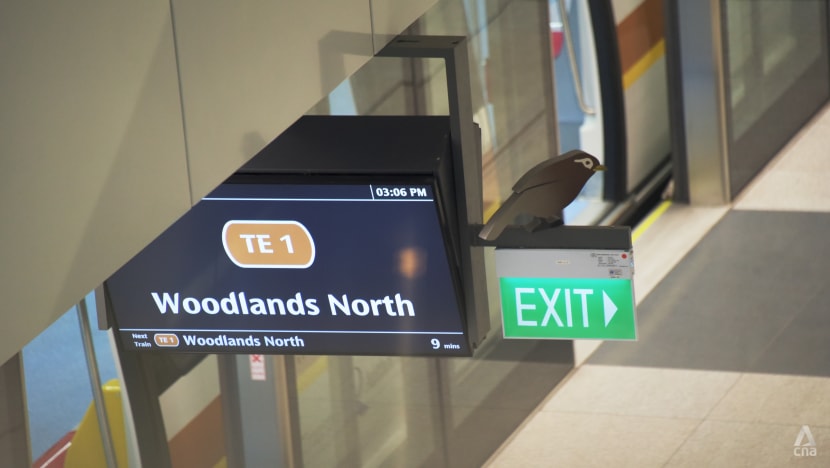
One of 22 bird sculptures scattered around Mayflower MRT Station. (Photo: Try Sutrisno Foo)
SINGAPORE: Like the other 159 stations in Singapore’s rail network, six new MRT stations on the Thomson-East Coast Line are made of steel and concrete.
But softer touches in the form of artwork - banyan trees, red-whiskered bulbuls and long-tailed macaques – are also to be found in Springleaf, Lentor, Mayflower, Bright Hill, Upper Thomson and Caldecott stations.
The artwork depicts elements of nature found along the 13km-stretch of the rail line, which will begin operations on Aug 28.
The six stations are part of the Land Transport Authority’s (LTA) 24-year-old Art in Transit programme, which integrates works by leading Singapore artists into the rail network.
LTA infrastructure design and engineering senior architect Ricky Lee said the nature theme was relevant to the stations, as they connect areas around Singapore’s Central Catchment Nature Reserve.
TREE OF MEMORIES
At Springleaf station - which serves the neighbouring Springleaf and Thong Soon estates - commuters are greeted by a towering banyan tree, adorning the elevator shaft connecting the concourse and platform levels of the station.
Speaking to reporters during a preview of the new Thomson-East Coast Line stations on Tuesday (Aug 17), artist Koh Hong Teng said his artwork, entitled Tree of Memories, was inspired by a banyan tree in the nearby Springleaf Nature Park.
The tree in his piece is intertwined with the shophouses along Upper Thomson Road to create a sense of magic realism, said Mr Koh, whose graphic novel Ten Sticks and One Rice won the bronze award in the 7th International Manga Award in 2013.
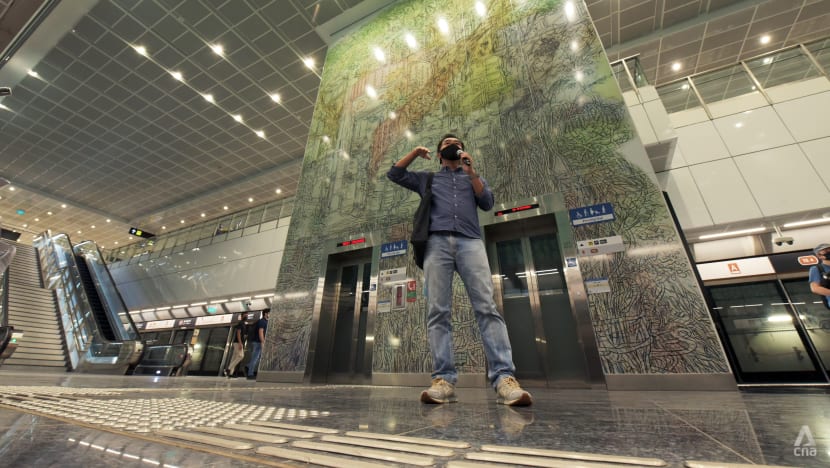
At Bright Hill station, a stone’s throw away from Bishan-Ang Mo Kio Park, architectural elements are inspired by natural elements at the park.
LTA’s Mr Lee explained that the blue design motifs on the walls overlooking the platform are reminiscent of the Kallang River running through the middle of the park, while gaps in the ceiling are meant to evoke “crown shyness” - a natural phenomenon where the crowns of trees do not touch each other.
Multi-disciplinary artist Angie Seah used gouache, watercolour and acrylic paints, as well as inks and markers, to create her piece A Kaleidoscopic Nature, which was inspired by her childhood in the area. The piece also incorporates colours and forms inspired by plants at Bishan-Ang Mo Kio Park.
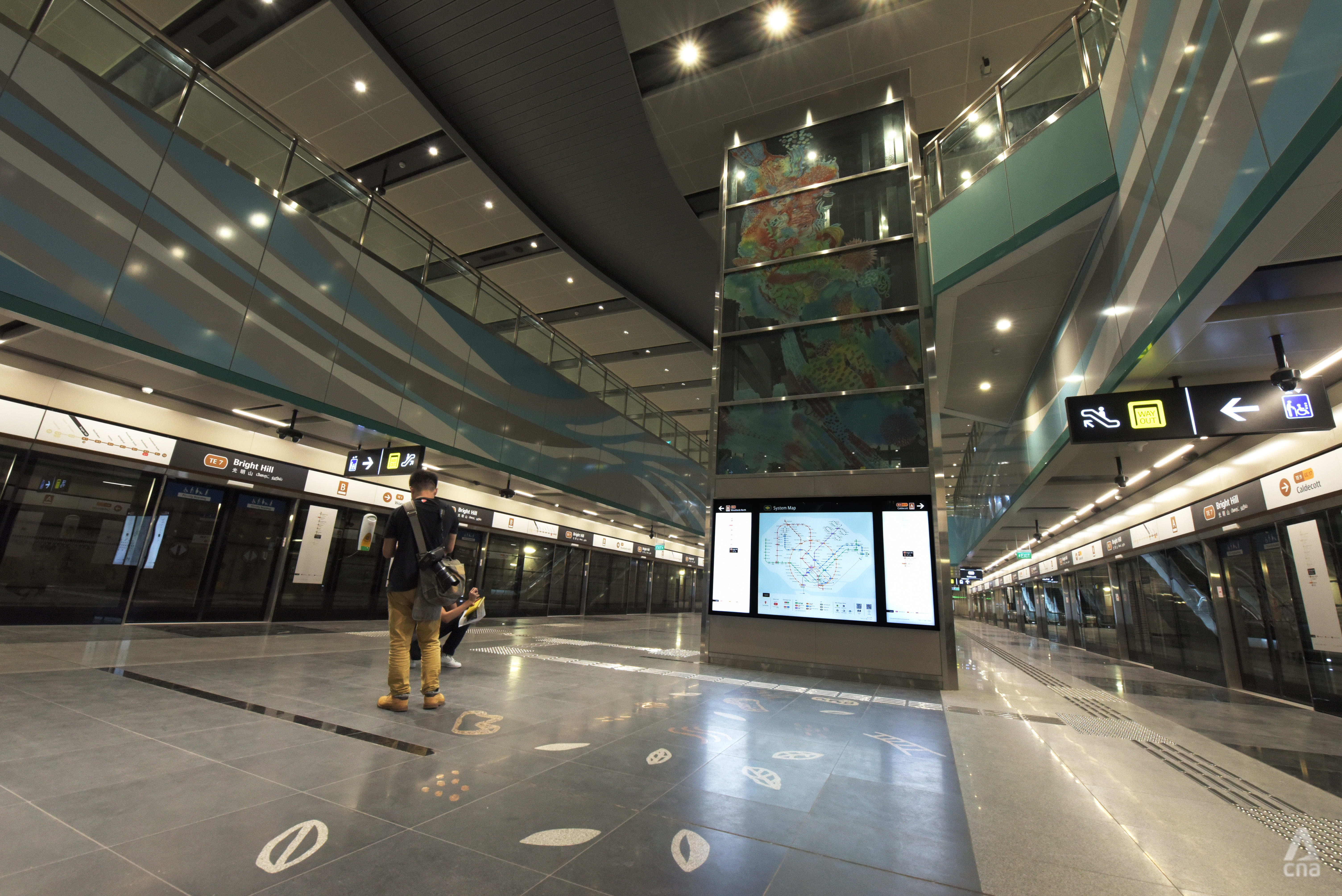
SONGBIRDS AND MACAQUES
Visitors to Mayflower station are invited to search for 22 sculptures of birds, scattered across the station.
Inspired by the neighbourhood’s songbird watching culture, artist Song-Ming Ang - who represented Singapore at the 58th Venice Biennale - created sculptures of seven species of birds commonly kept as pets in Singapore throughout the region.
They include the oriental white-eye, the red-whiskered bulbul and the zebra dove.
The honeycomb design on the walls and roof of the station were inspired by the idea of mayflowers and beehives, said Mr Lee.

Meanwhile at Upper Thomson station, 88 artworks of animals - primarily long-tailed macaques - are hidden all over the station, peeking out from walls and glass panels.
Artist Troy Chin’s piece - entitled Lost in Our (Concrete) Jungle - was inspired by the station’s proximity to Singapore’s largest nature reserve, the Central Catchment Nature Reserve, where the primates are commonly found.
Mr Chin, whose works include the browser-based interactive adventure O, said his intention was to present the art as a type of game where people could have a “pretty fun experience” with family and friends.
Wave-like designs on the walls of the Upper Thomson station meanwhile were inspired by the nearby MacRitchie as well as Upper and Lower Peirce Reservoirs, said Mr Lee, the LTA architect.
“The use of wavy patterns on the station’s internal walls was inspired by the wind element and its influence on the water surface in nature deriving from the proximity to these large areas of water,” he said.

CURVED LINES AND DOTS
For his artwork Interlude for Lentor, artist Tan Guo-Liang told reporters he was inspired by memories of visits to his aunt who lived at Teachers’ Estate, adjacent to Lentor station.
The streets in the estate are named after poets, including Muhammad Iqbal and Rabindranath Tagore, inspiring Mr Tan to view his artwork as a “visual poem”, resembling musical scores and calligraphic scripts covering the wall overlooking the station’s platform.
He also noted that the name of the station, Lentor - which means flexible in Malay - has added significance for the curved lines of the piece, which was initially created using mesh fabric and later reproduced on the station’s wall.
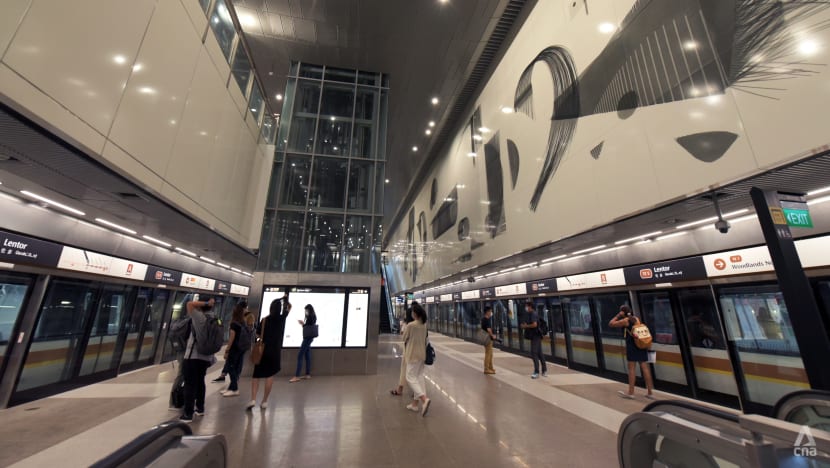
For Caldecott station - which serves as an interchange station with the Circle Line - artist Claire Lim was inspired by the station’s location near the Singapore Association of the Visually Handicapped and the Lighthouse School to create her art piece using Braille.
Little dots perforated onto wall panels around the station platform form hundreds of smiley faces, acting as a “cheery greeting” for commuters.
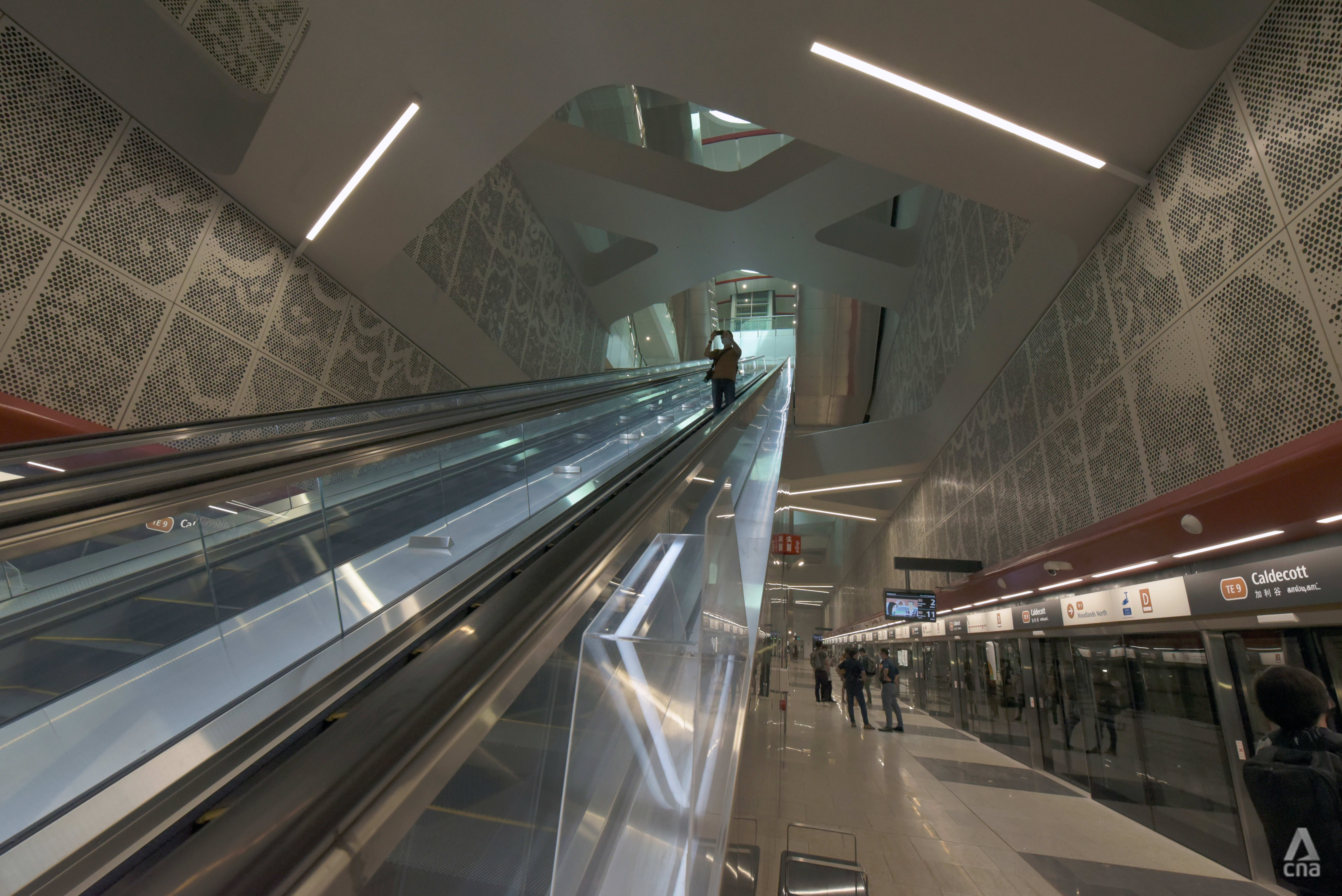
The six new stations also continue the new signage system introduced in the first stage of the Thomson-East Coast Line.
Larger fonts, improved icons and sharper colour contrast are aimed at making it easier for commuters to find their way around.
When completed, the 43km-long Thomson-East Coast Line will have 32 stations, running from Woodlands North to Sungei Bedok.
Singapore’s sixth MRT line is expected to serve an initial 500,000 commuters daily when fully operational, rising to about one million commuters in the longer term.
The line, which is operated by SMRT, runs parallel to the North-South Line and is expected to reduce the commuter load on the 34-year-old line.















